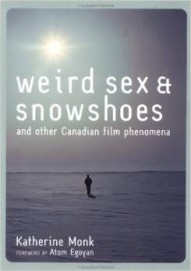 N. E. H. Hull & Peter Charles Hoffer
N. E. H. Hull & Peter Charles Hoffer
University Press of Kansas ($15.95)
by Felicia Parsons
Is a fetus a baby soul? Who gets to decide the course of a pregnancy? These are the questions people ask when discussing—or, more likely, doing battle over—abortion. What is the validity of substantive due process? Is the right to privacy a fiction fabricated out of the general language of the fourteenth amendment? These questions—not even understood, much less pondered by scores of pregnant women, right-to-life demonstrators, and religious leaders—are the questions upon which law is decided.
Roe v. Wade is one of the very few court cases people know by name. It is also one volume in a series entitled Landmark Law Cases & American Societies, which examines cultural issues through important legal decisions. The series editors, N.E.H. Hull and Peter Charles Hoffer, are also the authors of this volume. Each has several books, including examinations of female felons and the Salem witch trials, to their credit.
The authors admit that a scholarly approach to the topic of abortion is particularly difficult given that the subject is so emotionally charged as well as historically unresolved. Not that Hull and Hoffer don't try. Their efforts to remain objective while examining an issue they describe as "invariably moralistic and partisan" are generally well rewarded.
This book has the very specific goal of attending to only one aspect of the abortion issue, namely, the law as it has been addressed through the judicial branch of the federal government. The United States Supreme Court is as much affected by personalities, cultural habits, religious beliefs, social evolution—essentially the whole of existence—as any group of human beings. For writers attempting to trace a very specific path through that uncommonly complicated maze, there is always the danger of becoming either hopelessly abstracted and reductionist, or, contrarily, being unable to steer clear of lengthy detours. Hull and Hoffer manage to keep their bearings. Those less disciplined among us would certainly flounder.
Consequently, a reader looking for a primer on abortion might be frustrated by the very lack of engagement with broader personal and social issues that this topic requires. Likewise, someone hoping for an impassioned partisan manifesto will also be unrewarded. The book effectively sticks to its specific course, all without being overly legalistic. Legal terms and concepts are at very the core of the book, but they are generally explained sufficiently as to allow understanding without overburdening the reader with a college course in constitutional law.
This is not a textbook. In fact, the editorial decision not to include footnotes was, at times, frustrating. The authors intended that the book be "appealing for students and general readers." In an effort to find a happy balance, the tone occasionally wobbles between academic and popular. The prose can be dense and occasionally clumsy: "But the disparity between the importance that women assigned to the abortion issue and its relative unimportance within the late-nineteenth-century legal paradigm required that women find some collateral line of attack to open the door to the discussion of abortion, long before they could press for reform of the law." Nevertheless, it is usually more enlivened than one would expect from a dry treatise on this or any subject. Certainly the academic authority of the authors and their understanding of the legal principals about which they write is never in question.
The book is arranged chronologically, tracing the legal history of abortion in the western world from 1800 to the present day. The authors argue that early abortion law was intended to protect women from botched abortions, not fetuses from being aborted. They trace the expansion of abortion law from that which protects the mother, to that which protects the fetus even at the expense of the mother. While doing so, they illustrate the ties between abortion law and forces as diverse as the status of women, racism, class privilege, the paternalistic nature of the medical profession, and the interests of the church in controlling reproduction—an interest which now seems so entrenched but which, the authors argue, only became active relatively recently.
Of course, there can be no conclusion to this topic. The authors choose, in the last chapter, to turn their ears to the human, rather than the judicial, voice. One is struck—and possibly a bit relieved—to see that they, too, are not without feelings on this most provocative and disturbing subject, but even here those feelings give way to the desire to understand. Certainly this is a suitable model for all of us.
Click here to purchase this book at your local independent bookstore

Rain Taxi Online Edition, Winter 2002/2003 | © Rain Taxi, Inc. 2002/2003

 Edited by Tonya Foster and Kristin Prevallet
Edited by Tonya Foster and Kristin Prevallet
 Katherine Monk
Katherine Monk




